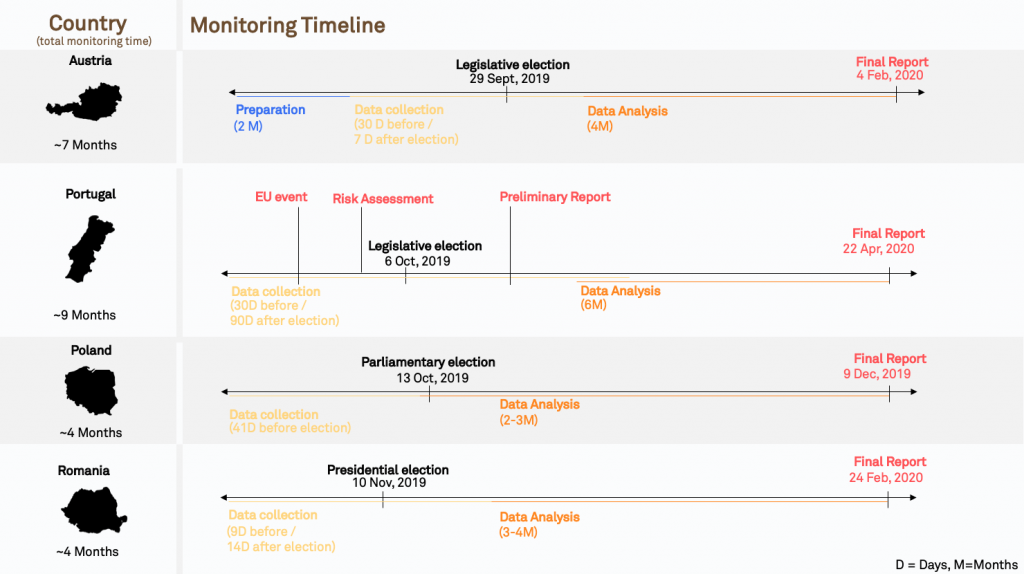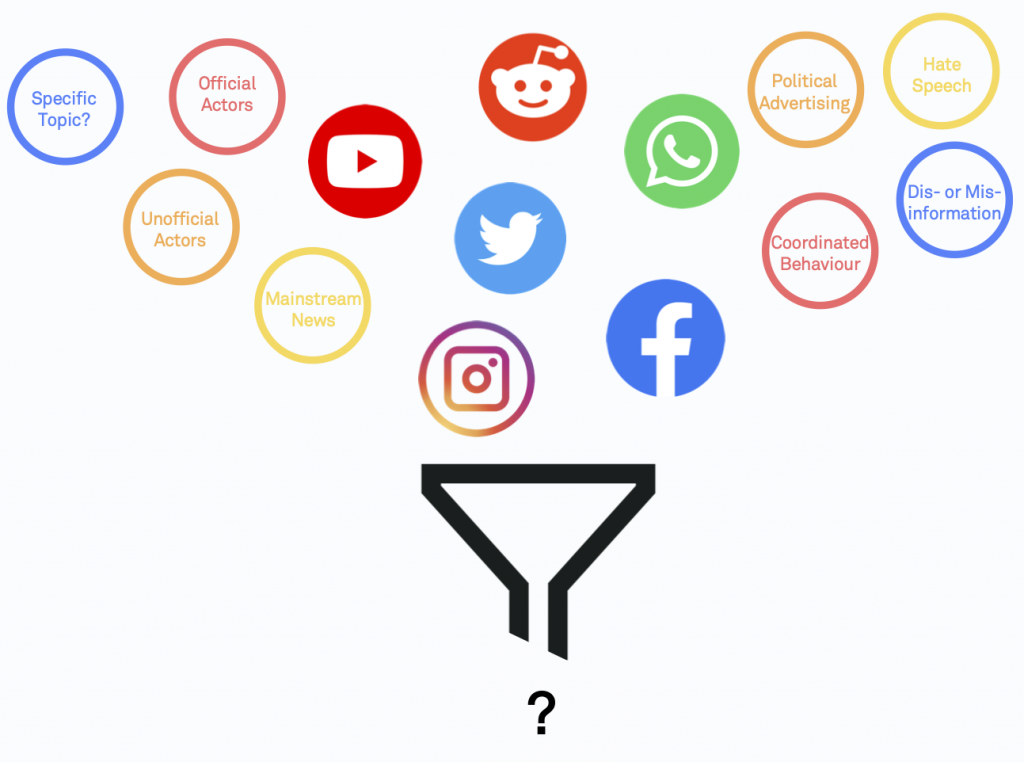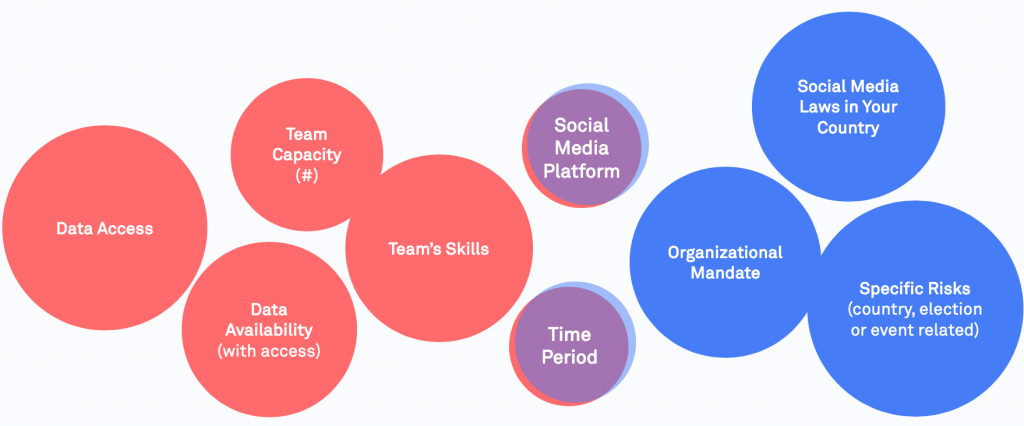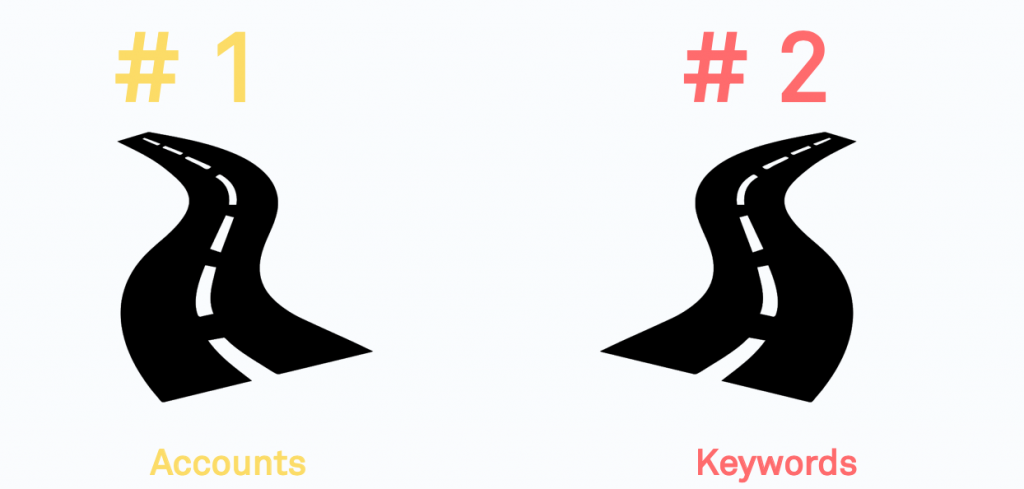getting started in your own context
Understanding your political social media ecosystem is essential before beginning your analysis. What are the critical questions that you should ask?
1. Gather your team
- Teams require a combination of local political knowledge and some data analysis capacities. Consider teammates with:
- Political, social science or electoral observation background
- Data scientists or some familiarity with data analysis using Excel
- A combination of the above
- In DRI’s experience, teams consist of around 4-7 members
- Your team’s capacities (size and expertise) will determine the amount of data you can process
- Teams can start from scratch with the proper training, leadership and political knowledge
2. Create a project timeline
Your project will include several phases:
- Preparation: Creating your team, selecting your sample, getting access to data
- Data collection: Gathering selected data from your platform(s) of choice
- Data analysis: Classifying posts, analyzing trends and visualizing results
- Reporting and outreach: Summarizing findings in a report(s) and possible outreach activities
Here are some sample timelines based on real projects to help you get started with project planning:

See below in section Section 6, “What Timeframe?”, for more details on how to select your overall timeframe.
3. Conduct your risk assessment
Conducting a risk assessment prior to starting your work may help your team understand the current situation and narrow your scope. DRI has developed a Risk Assessment framework. See our User Guide to get started:
4. Research any relevant laws
Does your country have any laws relevant to disinformation or hate speech online? Such information might be useful before beginning your monitoring. Especially when it comes to elections, campaign finance laws related to online political advertisements would be particularly important to understand.
5. Narrow your scope
When getting started, there are many options regarding what can be monitored, but it is not possible to monitor it all. With an ocean of opportunities, you must somehow limit these choices into a smaller selection.

To help you decide, you must keep in mind possible restraints while actively choosing your priorities. For example, if your organizational mandate is online campaign finance transparency, you might want to focus on monitoring political advertisements. You might want to monitor the top three social media platforms in your country but will have to look only at the top posts or add more analysts to your team.

6. Remember your starting points
Once you have selected your platform of interest, there are two main starting points when working with social media data: (a) accounts and (b) keywords. This means, at the very beginning you will need to create lists of relevant accounts to monitor and/or specific topics and keywords to search for.

Using the actor-based approach during an election, you could create a list of the relevant accounts for politicians, political parties, media outlets and political influencers. With the keyword-based approach, you could put together a list of relevant topics with relevant keywords. For example, if you identify “environment” as a topic, you would want to search posts for keywords like “#fridaysforfuture” or “extinctionrebellion”.
You can also combine these two approaches by including all posts from specific actors in addition to posts discussing certain topics. This might be particularly appropriate during elections. For example, you could monitor all known candidates, political parties and media outlets but also include posts discussing the election (e.g. #Election2020) and critical topics.
7. Answer the guiding questions
By now you should be able to answer these five key questions before beginning your monitoring.
Click on each question to check if you are ready:
Some phenomena may be particularly important based on your organizational mandate or a risk assessment of your country context:
- Disinformation/misinformation
- Hate speech
- Political/issue advertisements
- Coordinated Behaviour
Coming up with a list of topics is important so you can zero in on the most important political discussions in your country.
How can you come up with this list of topics and keywords?
- Performing a risk assessment
- External lists from non-partisan organisations or news outlets (e.g. ISideWith)
- Discussing with media or political experts
- Getting in contact with other social media monitoring teams in your country to collaborate
Based on a list of topics, you can come up with a list of keywords to filter down your selection of social media data. When moving from topics to keywords, this process is experimental. You will need to see if some keywords are too general and returning unrelated social media posts.
Identify key actors by:
- Using your context-specific knowledge to come up with a list of actors
- Checking for pre-existing online lists (e.g. all candidates, political parties, top media outlets)
- Contacting SMM organizations in your country to learn about any known disinformation actors
As a starting point, you can consider the “official” political actors in your given context:
- Politicians
- Political parties
- Top media outlets
- Political influencers (e.g. journalists, comedians)
Considering “unofficial” political actors is also important, especially when monitoring for harmful phenomena:
- Unverified accounts discussing politics
If you are analyzing an election, the timeframe will depend on your electoral period. For example, some countries begin campaigning over a year before an election. On the other hand, if a snap election is called then monitoring will need to begin as soon as campaigning begins. It may be important to consider:
- Monitoring silence periods to ensure campaigns respect laws
- Post-election discussions
- Aligning with campaign finance reporting periods in the case of monitoring political advertisements
Furthermore, DRI recommends looking at online democratic discourse beyond the electoral period. Why Monitor Social Media shows that manipulation happens around the clock, particularly:
- Political events (i.e. controversial policy decisions)
- Disasters (i.e. Covid-19 Info-demic)
Choose your most relevant platform by considering the following:
- Platforms that are the most used by citizens in your country
- Platforms that are popular for news and politics content
- Platforms that are known to spread disinformation (possibly messaging platforms)
Upon choosing your most relevant platform, data access and availability may limit your platform selection process:
- Accessing data from some platforms may be more difficult than others, which might limit your platform selection process. For example, if you are not able to get access to Facebook data in a timely manner, you might need to look at accessing Twitter data, which is available on the same day. Although, if your team does not have programming skills, making use of the Twitter API or YouTube API might prove challenging. Read more in our section on How You Can Access Data.
- Depending on what you are trying to study, some platforms may offer more relevant metrics than others. If you are interested in understanding what citizens are saying, Facebook’s CrowdTangle only provides access to posts by public groups and pages without comments from private citizen accounts. With Twitter on the other hand, all Tweets from public accounts are available, which includes citizen dialogue.